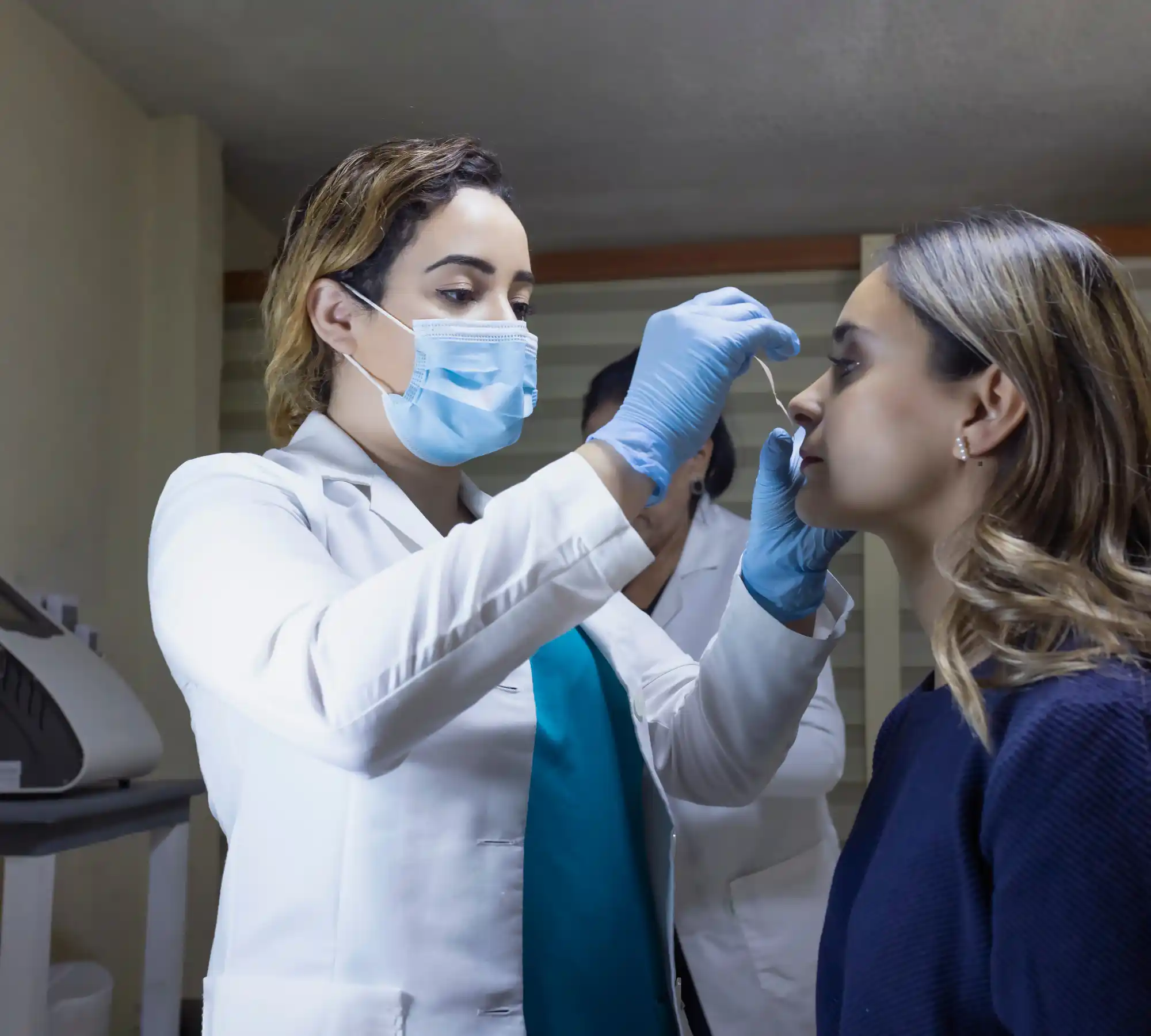For patients who did not achieve their desired aesthetic appearance or who continue to have functional problems (like breathing issues) after their first nose surgery (primary rhinoplasty), revision rhinoplasty (secondary rhinoplasty) offers a new ray of hope. However, this is a far more complex, meticulous, and experience-dependent process than the primary surgery. The key to its success lies in one single word: Planning.
At Medivis Clinic, we treat every revision case as a unique project of engineering and art. We understand the physical and psychological burden of an unsuccessful nose surgery, and we want to share why we take surgical planning so seriously to achieve the "perfect" result this time.
What is Revision Rhinoplasty and Why Is It So Complex?
Revision rhinoplasty is the surgical procedure performed to correct aesthetic or functional problems in a patient who has previously undergone one or more nose operations.
But what makes this surgery so much more challenging than the first?
Altered Anatomy: The natural cartilage and bone structure of the nose was changed during the first surgery. The surgeon must work on a structure that has already been intervened upon, rather than a "normal" anatomy.
Scar Tissue: Every surgery creates scar tissue under the skin. This hard and unpredictable tissue reduces skin elasticity, restricts the movement of cartilage, and complicates the healing process.
Cartilage Deficiency: Often, a significant portion of the septal cartilage (inside the nose) has been used or damaged in the first surgery. When extra cartilage is needed for the correction, it may be necessary to harvest it from the ear or rib (a "graft").
Patient Expectations: Revision patients are, justifiably, more anxious and sensitive. Managing their expectations and clearly establishing what can realistically be achieved is a critical part of the planning.
The Revision Rhinoplasty Planning Stages at Medivis Clinic
A successful revision surgery doesn't begin in the operating room; it begins months earlier, in the consultation room. Here is our step-by-step surgical planning process:
1. Listening: Understanding the Problem and the Story
First and foremost, we listen to our patients.
What bothered you about the first surgery?
Aesthetically, what do you dislike about your current nose? (e.g., a drooping tip, a persistent hump, asymmetry, a "pinched" look, etc.)
Do you have problems with breathing?
What is your exact expectation?
The answers to these questions form our roadmap.
2. Comprehensive Examination and Functional Analysis
Planning a revision isn't just "looking," it's "seeing."
Skin Thickness: Skin quality directly impacts the final result. Thick skin can hide fine details, while very thin skin can reveal the slightest irregularity.
Cartilage Status: We manually examine (palpate) the nasal tip, bridge, and wings to assess the strength and position of the remaining cartilage.
Endoscopic Exam: We use a small camera to look inside the nose to clearly see if there is a functional problem blocking the airway (like a deviated septum or enlarged turbinates).
3. Planning with Technology: 3D Simulation
In revision surgery, it is essential that the patient and surgeon are "speaking the same language." This is where the 3D simulation technologies (like Vectra 3D) we use at Medivis Clinic come into play.
We scan the patient's current nasal structure in three dimensions. We don't just look at a photo; we rotate the nose from every angle to identify problems. Then, on the computer, we simulate the changes that are "possible" and "realistic." This allows our patient to concretely see what kind of result they can expect and aligns our expectations on a common ground.
4. The Grafting Strategy: Identifying Missing Materials
Most revision surgeries are "reconstruction" surgeries. To build up a collapsed nasal bridge, support a weak nasal tip, or straighten a crooked nasal wall, we need strong support materials (grafts).
During the planning phase, we decide where to source this cartilage:
Septum: Our first choice, if enough cartilage remains from the first surgery.
Ear: Used for more flexible cartilage, often needed to shape the nasal tip.
Rib (Costal Cartilage): The strongest and most abundant material, required to rebuild the main framework of the nose, define the bridge, or correct severe collapse/crookedness.
5. Deciding on the Surgical Technique
With all this data, the surgeon decides which technique to use:
Open Technique: This is the most common approach in revision rhinoplasty. A small incision is made on the columella (the skin between the nostrils), allowing the surgeon to see the entire nasal framework clearly. This provides complete control for placing grafts, suturing, and cleaning out scar tissue.
Closed Technique: This may be considered for much more limited, minor corrections (e.g., smoothing a small hump).
Revision rhinoplasty is not a "let's try this one more time" surgery. It is a high-precision operation where every step is calculated not in centimeters, but in millimeters.
At Medivis Clinic, we approach revision rhinoplasty planning with the same meticulousness as an architect designing a new, beautiful, functional, and structurally sound building to replace one that has failed. Our goal is not just a more beautiful nose, but one that is healthy to breathe through, in perfect harmony with your face, and, most importantly, provides a lasting result.
If you are experiencing disappointment after your first surgery, we invite you to our clinic for a consultation to discuss what is possible with the right plan.
